Speed 0.5 knots
Course 10°
Location Larsen A (-64.61341833, -58.43913333)
Depth 579 meters
Today we've started headed back north along the Antarctic Peninsula. This morning, I got up at 5:30am to help out with a Blake Trawl. The Blake Trawl involves dragging a large net along the bottom of the seafloor that picks up lots of mud and lots of animals. This was most likely the last one of the trip and I didn't want to miss it.
Megafauna
The biology team refers to the animals they collect from the Blake Trawl as megafauna. Mega means big and fauna means animals, so megafauna are big animals. These are animals you can see with the naked eye. One of the more interesting looking animals is the sea pig. These are relatives of the sea cucumber and they eat organisms they find in the top layer of the marine sediment. We've found a lot of these in recent Blake Trawls.
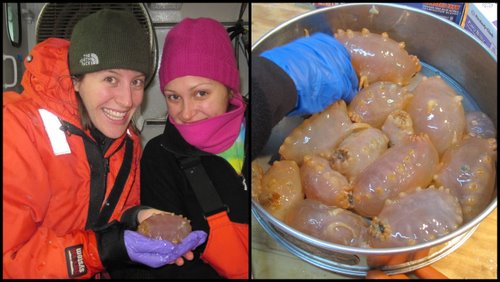
When we're on deck, all of the organisms go into buckets that are then carried indoors. Once they are inside, the scientists get to work classifying, taking samples, and storing specimens for future studies.
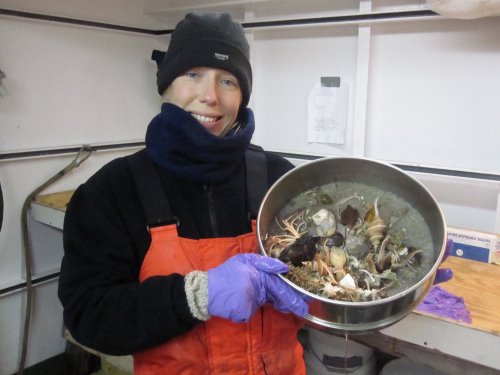
The scientists use sieves that allow mud and water to run through, but prevent organisms from being washed away. They usually dump the buckets into a sieve so they can pick out the creatures more easily. Because everyone wears thick insulated gloves, the scientists use long tweezers to grab hold of the organisms.
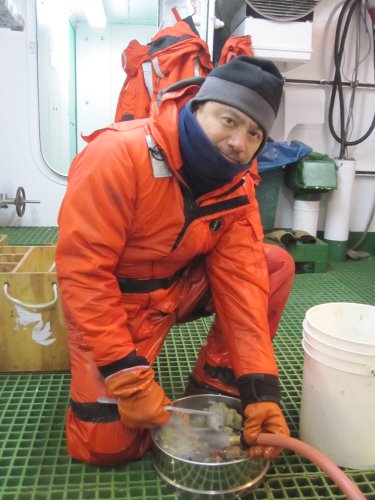
Blake Trawls are a really messy business. It was about 0°F on deck this morning, so I was covered in frozen mud and I was wearing lots of layers under my float suit to keep warm. The blue neck gaiter is really helpful because at the cold temperatures, my nose tends to run a lot. A lot of us tend to use our neck gaiters as makeshift tissues to wipe our noses. Good thing there are washing machines on board, because these need to get washed frequently.
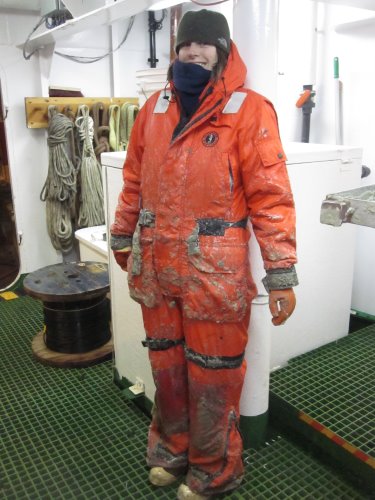
One last picture from this morning, because everyone knows how much I love octopus. We found three of these in this morning's Blake Trawl and this is a much more typical size.
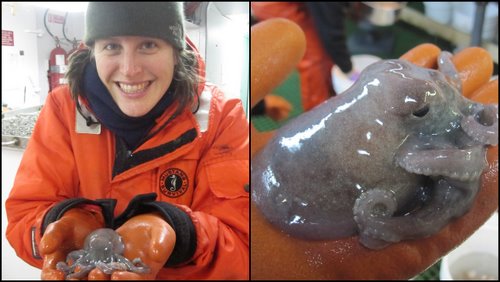
Just a reminder that the PolarConnect event is on Monday, April 9 at 8:30am Alaska Daylight Time [9:30am PDT, 10:30am MDT, 11:30am CDT, 12:30pm EDT]. I'll be joined by Maria Vernet, Bruce Huber and Amy Leventer and we'll be talking about life on Antarctica and the amazing research being done along the Larsen Ice Shelf. The first half will be our presentation and the second half will be a real-time question and answer session.
Anyone is welcome to join the presentation. It's best if you register in advance at http://www.polartrec.com/polar-connect/register. More event details are located at that site. If you have questions, please contact PolarTREC at info [at] polartrec.com. If you are unable to join us for the event, you will eventually be able to watch an archived copy on the PolarTREC website.


Comments